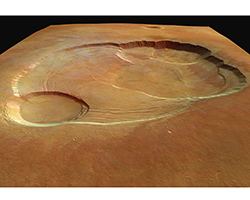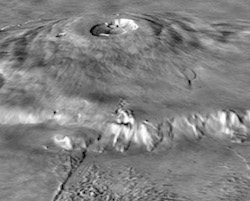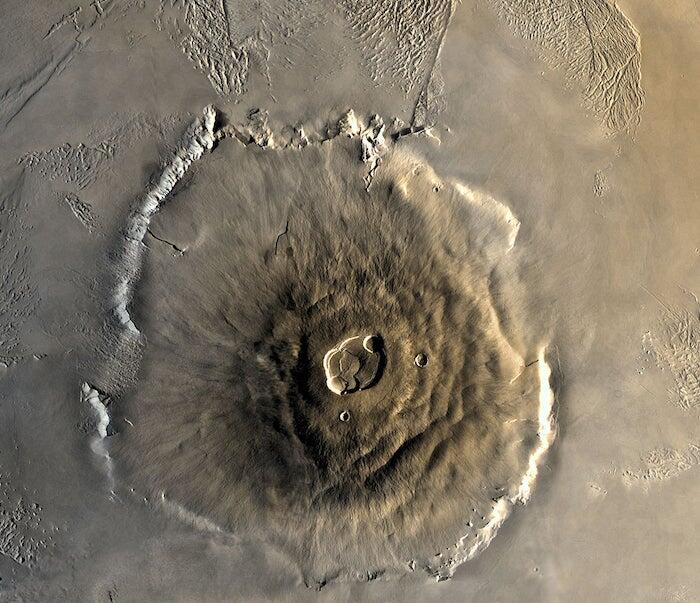
Secrets in Alien Volcanoes and Lava
Have you ever baked chocolate chip cookies? Oatmeal? Sugar? All three? If you have, then you’ll know that the recipe and the ingredients are similar, with only a few key differences (i.e. the chocolate chips, the oatmeal, or the amount of sugar). You can think of finding volcanoes on other planets or moons in sort of the same way.
 The presence of volcanic landforms on other planets and moons tells us that these objects – Mercury, Venus, the Moon, Mars, and Io – might be made of the same ingredients as Earth. The ingredients, or composition, of a planet tells us how and where it formed in the early Solar System. Planets and moons made of the same stuff generally formed in the same region of space.
The presence of volcanic landforms on other planets and moons tells us that these objects – Mercury, Venus, the Moon, Mars, and Io – might be made of the same ingredients as Earth. The ingredients, or composition, of a planet tells us how and where it formed in the early Solar System. Planets and moons made of the same stuff generally formed in the same region of space.
When baking cookies, small differences in ingredients can produce a large difference in taste or texture. For example, that oatmeal cookie won’t be quite as sweet as the sugar cookie. Or the chocolate chip cookie might seem chunkier than the chewy oatmeal. The same is true for volcanoes. Small differences can have huge results.
Magma on Mars
On Mars, for example, the gravity is less than on Earth. As a result, we see shield volcanoes (like Mauna Loa, Hawai’i) but much, much larger. The lower gravity means that volcanic mountains can get larger without collapsing. It also means that volcanoes have to produce more lava to erupt.
 The lack of gravity also puts less force on lava to spread out, allowing it to build up over time into a shield shape. All of these factors help make the volcanoes on Mars so large. Olympus Mons, the largest and tallest volcano in the Solar System, covers an area the size of Arizona and is 2.5 times taller than Mount Everest.
The lack of gravity also puts less force on lava to spread out, allowing it to build up over time into a shield shape. All of these factors help make the volcanoes on Mars so large. Olympus Mons, the largest and tallest volcano in the Solar System, covers an area the size of Arizona and is 2.5 times taller than Mount Everest.
What does Olympus Mons tell us about Mars? It tells us that Mars was capable of producing enormous amounts of lava over millions of years. This means that the inside of the planet was once just as hot as Earth, despite being a smaller planet. Olympus Mons also tells us that Mars’s volcanoes aren’t too different from Earth (remember: Olympus Mons is just a super-sized Hawai’i) and Mars is probably made of the same rocks and minerals as Earth.
Additional images via Wikimedia Commons. View of Olympus Mons from above by NASA, modified by Seddon.

A beautiful image of Olympus Mons, from above, looking down, made from images taken by the Viking Orbiter.
Be Part of
Ask An Earth and
Space Scientist
By volunteering, or simply sending us feedback on the site. Scientists, teachers, writers, illustrators, and translators are all important to the program. If you are interested in helping with the website we have a volunteers page to get the process started.
